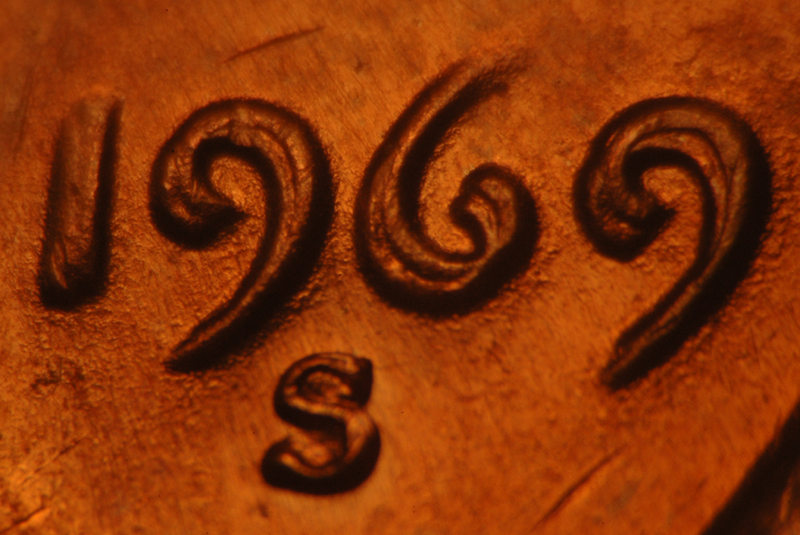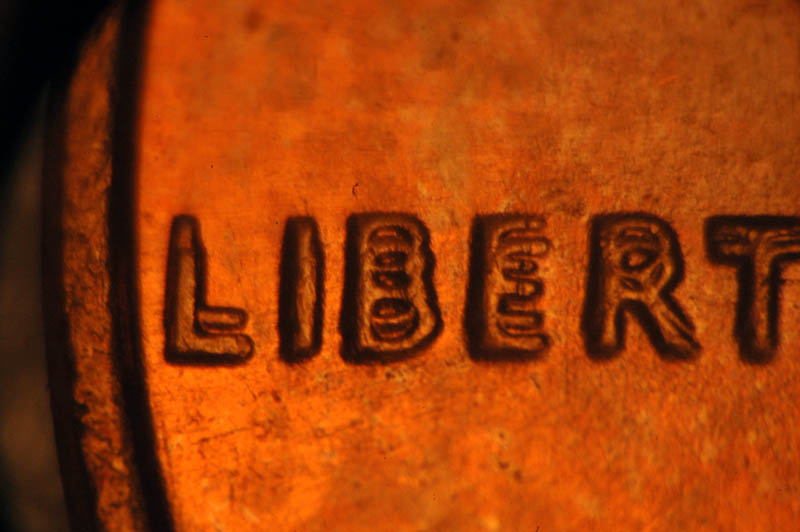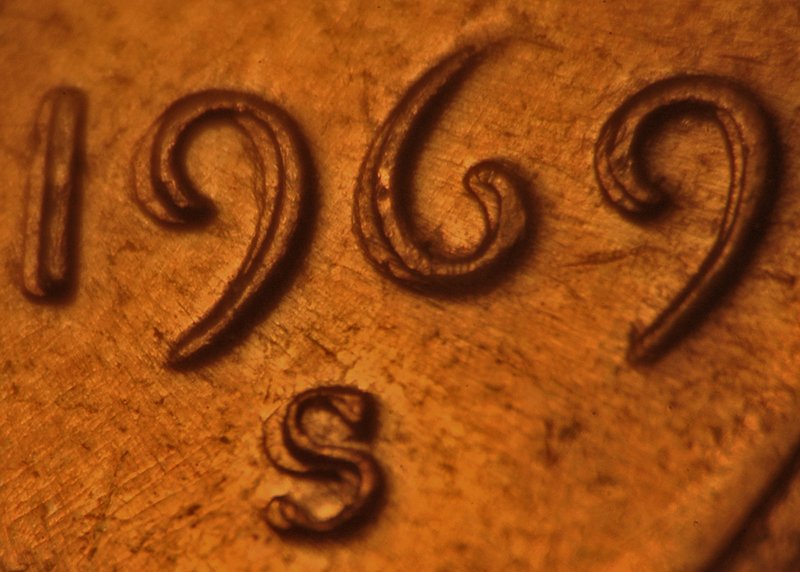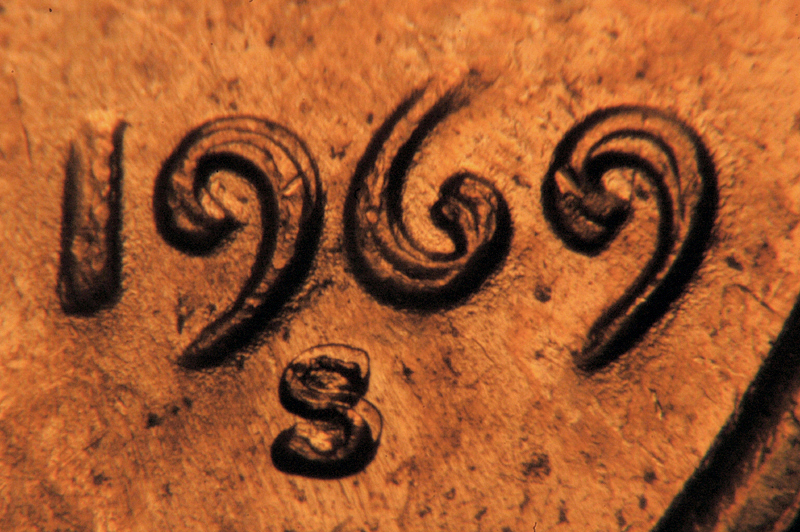|
|
|
|
Is My 1969-S Cent The "Real" Doubled Die?
by Ken Potter - NLG
Copyright Ken Potter 2002
Revised w/new images and additional text 2013

Image No 1. Genuine 1969-S Doubled Die Cent.
Coin courtesy of Mike Tremonti of MI.

Image No 2. Genuine 1969-S Doubled Die Cent.
Coin courtesy of Mike Tremonti of MI.

Image No 3. Genuine 1969-S Doubled Die Cent.
Coin courtesy of Mike Tremonti of MI.

Image No 4. Genuine 1969-S Doubled Die Cent.
Coin courtesy of Mike Tremonti of MI.
Without question, the most frequent question I field in reference to Doubled Dies revolves around the 1969-S Lincoln Cent. There are two key reasons for this; the first is that the 1969-S Doubled Die is an extremely valuable coin with the one pictured at the top of the page (Images No. 1-4) exceeding $125,000 in a Heritage Auction in 2008. As a consequence, folks are naturally interested in knowing more about a coin that is of a vintage recent enough to potentially still be found in pocket change and a date still being offered in brilliant uncirculated roll quantities at modest prices.
The second reason I get so many questions about this coin is the fact
that this date, along with the 1968-S and 1970-S cents, arguably share the distinction of
boasting the largest percentage of examples of Strike
Doubled coins within their
respective mintages over that of any other US coins. The fact is, it is
hard
to find a roll of cents for any of these dates without finding pieces exhibiting this
affliction.
Although worthless (and technically a form of damage) Strike
Doubling is often confused by non-variety specialists as being
Hub Doubling or what
we commonly refer to as a Doubled Die.
Strike Doubling is often referred to
by others as "mechanical doubling," "machine doubling damage,"
"shelf doubling," "die bounce," and a host of other terms.
The trick to learning if your coin is the valuable Doubled
Die is to
simply match your coin to the photos shown above in Images No. 1-4. If you have
the valuable Doubled Die, it will exhibit the doubling in all the areas exactly as
shown in the top four images with the only exception being if it also has Strike
Doubling (read on). Another diagnostic of a genuine 1969-S Doubled Die is
the sort of pebbly or crumbing look of the fields around the date. This
pebbly look is most apparent between the 9 and 6 and to the right of the final 9
of date.
If your coin is Strike Doubled, (as are 99.9%+ of the finds), it will show doubling in varying locations, directions and strengths on the coin (which can vary greatly from coin to coin). These areas of doubling may be in similar locations to the genuine Doubled Die but will not show the well-rounded, overlapping, raised secondary images you see on the Doubled Die.

Image No 5. Strike Doubled 1969-S Cent. Coin
courtesy of Ali Siemsinginofski of MI.
Conversely, Strike Doubling, which is the result of die-bounce due to vibrations in the press, occurs within the split second after the coin is struck and will typically show as flat shelf-like extensions of the doubled characters. There will be no open field areas in-between the doubled images as are clearly seen on the genuine article. On many extreme examples of Strike Doubling you will actually see a narrowing of the original raised character from whence the lower shelf of doubling originated when that portion of that character was smashed down into the field. This narrowing of the original height of a character is not always obvious but is another diagnostic of Strike Doubling to look for.
I show Strike Doubling on the
1969-S cent in Image No. 5. I repeat that Strike Doubling may show in
any direction in any areas of the coin either widely across the entire design or
just restricted to just one of two elements. It may be more closely
doubled or more widely doubled than shown here. It is also not limited to
this date but shows up on just about every date, denomination and
type of coin ever struck by any Mint.
But wait, that's not all! Of the first four genuine 1969-S Doubled Dies that I actually held in my hand, every single one of them exhibited a tiny bit of Strike Doubling on the "S" Mintmark. While it was hardly noticeable, it was nonetheless there. In the meantime, for decades experts have been telling folks that if the 1969-S they have with doubling, also shows doubling on the "S" Mintmark that it was in fact not the genuine Doubled Die.
For decades I have had
to correct the misinformation of these well-intended folks were giving out
because there was really no reason why a genuine 1969-S Doubled Die could not
also be afflicted with strong Strike Doubling. I told folks that the
doubling of the S was a pretty reasonable clue that it was not the genuine
Doubled Die but that it was not a 100% positive indicator.
In late 2007 my position was finally vindicated when I saw another 1969-S Doubled Die that also boasted strong Strike Doubling on the date and other areas including the S Mintmark. The image of the date area of that coin is shown below in Image No. 6. So now you have the rest of the story.

Image No 6. This is a genuine 1969-S Doubled Die that also exhibits very
strong Strike Doubling on the "96" of date and the Mintmark.
##
For more detailed information on
Doubled Dies and other forms of doubling, we recommend that you visit our
Educational Image Gallery
Educational Image
Gallery
Free counters provided by Andale.